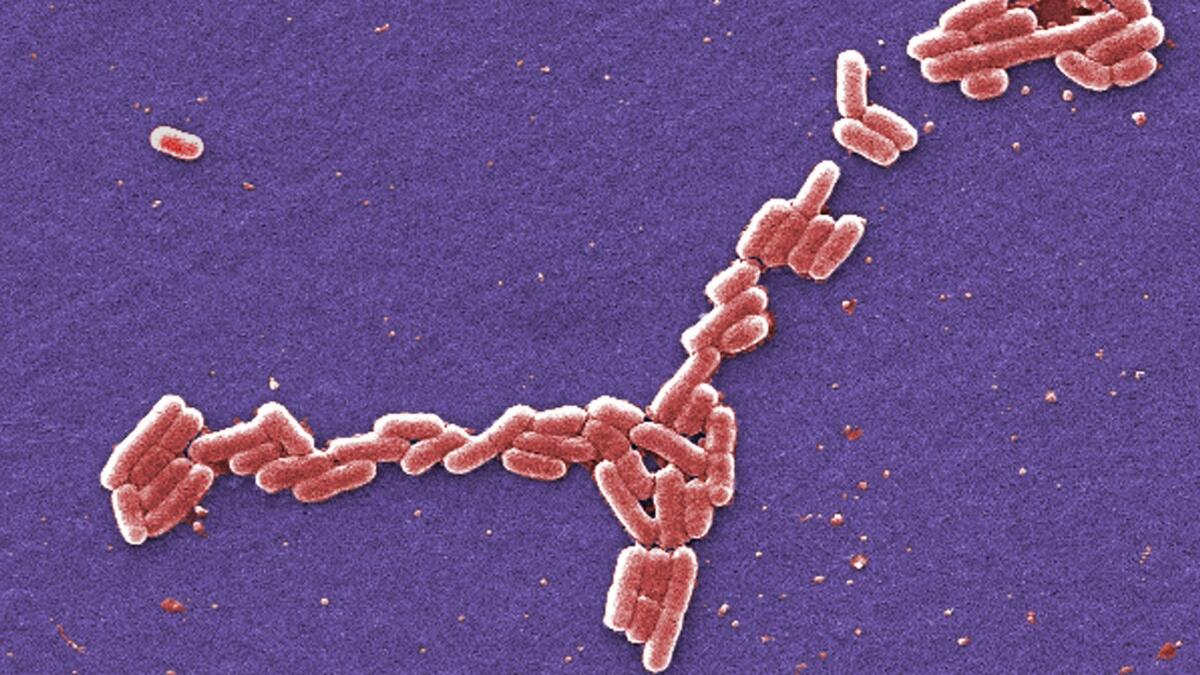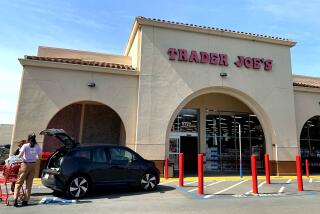E. coli outbreak linked to romaine lettuce kills 1 in California

One death in California has been blamed on tainted romaine lettuce. The death follows the worst E. coli outbreak in more than a decade.
Tainted romaine lettuce has been blamed for one death in California, as federal health officials added more than 20 more victims to the worst E. coli outbreak in more than a decade.
The person who died in California has not been identified by the Centers for Disease Control and Prevention, which said Wednesday that the tally of people sickened by the outbreak had risen to 121 in 25 states.
Health officials say the contamination so far has been traced to romaine lettuce grown in the area around Yuma, Ariz. — part of the growing region that produces 90% of the nation’s winter lettuce, and which has largely stopped growing the winter crop.
Last week, the CDC said whole head romaine lettuce from Harrison Farms near Yuma has been linked to eight cases among prisoners in a Nome, Ala., detention facility. At least a dozen other locations are under scrutiny for possible links to the remaining cases, according to the Food and Drug Administration.
The FDA is “examining all possibilities, including that contamination may have occurred at any point along the growing, harvesting, packaging, and distribution chain.”
The FDA noted that the other cases were linked to restaurant salads in which romaine lettuce was the only common ingredient.

There has been no recall, in part because the lettuce traced to the Yuma farm, harvested between March 5-16, would be far beyond its 21-day shelf life, and no more lettuce is being grown on Harrison’s fields, officials said last week.
The winter lettuce season in the Yuma area and the adjacent Imperial Valley in California is largely over, and no other growing region thus far has been linked to any illnesses.
The most recent spate of illnesses began April 21, about a month after the outbreak first was reported, the CDC said. Three more states were added to the outbreak map: Kentucky, Massachusetts and Utah, the agency said.
More cases can be expected due to delays in onset, identification and reporting of illnesses, the CDC has warned.
The strain of E. coli has been identified as one that produces strong versions of Shiga toxins, which bind to blood cells and can destroy organ linings — a scenario that has sent 52 people to hospitals, including 10 with kidney failure, the CDC said. That hospitalization rate is far higher than usual, the agency added.
The outbreak is the worst of its kind since 2006, when about 200 people were sickened by contaminated spinach from the Salinas Valley, the CDC said.
Symptoms include severe stomach cramps, vomiting and diarrhea that can be bloody. People usually get sick two to eight days after ingesting the bacteria, and most people recover within one week, the CDC said.
Here is the agency’s advice to consumers:
- Do not eat or buy romaine lettuce unless you can confirm it is not from the Yuma, Ariz., growing region.
- Product labels often do not identify growing regions, so do not eat or buy romaine lettuce if you do not know where it was grown.
- This advice includes whole heads and hearts of romaine, chopped romaine, baby romaine, organic romaine, and salads and salad mixes containing romaine lettuce. If you do not know if the lettuce in a salad mix is romaine, do not eat it.
Follow me: @LATgeoffmohan







